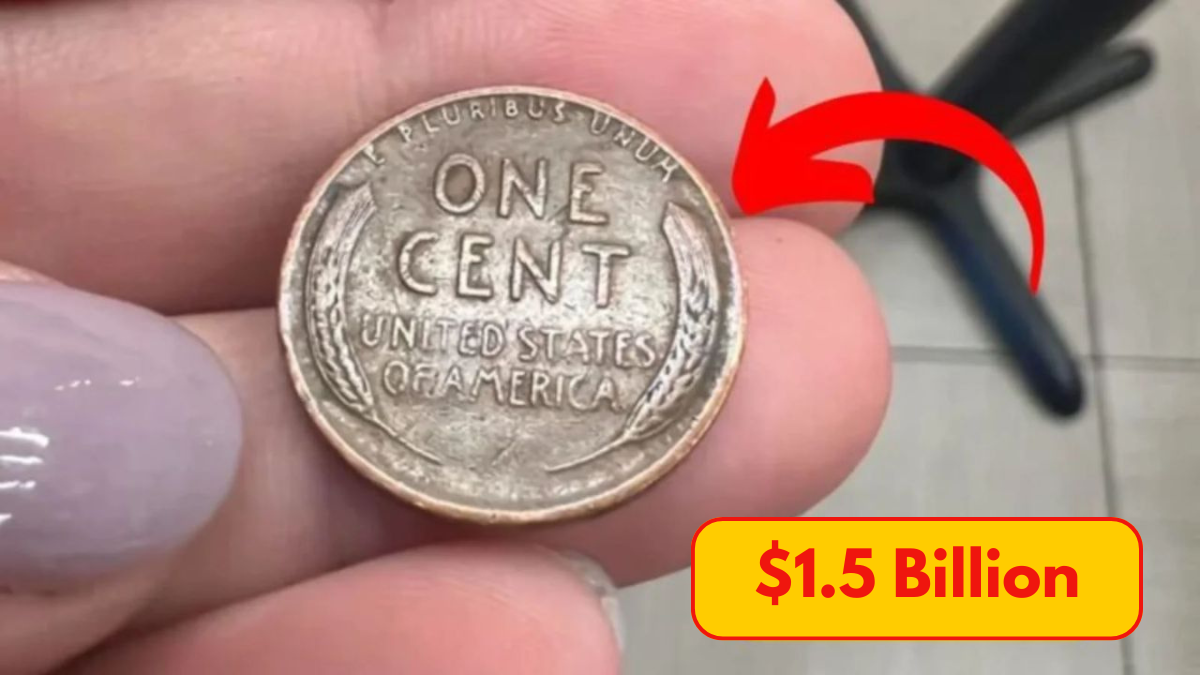
The Iconic : A Historical Treasure
The Lincoln Wheat Penny, minted for the first time in 1909, is a legendary piece in the world of numismatics. This coin made history as the first U.S. currency to feature a real person—President Abraham Lincoln—instead of allegorical images. Designed by Victor David Brenner to commemorate Lincoln’s 100th birthday, the coin displays Lincoln’s profile on the front and two wheat stalks on the reverse, symbolizing America’s agrarian roots. This timeless design was in circulation until 1958, making it one of the longest-running designs in U.S. coinage history.
Is There Really a $1.5 Billion Lincoln Penny?
Rumors of a Lincoln Wheat Penny valued at $1.5 billion have sparked global curiosity. Although no verified sale has reached such a staggering figure, rare versions of this coin have fetched jaw-dropping prices. One of the most famous examples, the 1943 Copper Penny, sold for $1.7 million at auction. Experts speculate that if an uncirculated, flawless version of this already rare penny were discovered, it could potentially command a record-breaking price. However, hitting the billion-dollar mark would require an extraordinary and one-of-a-kind piece with immense historical significance.
A Wartime Minting Error That Became a Collectible Legend
The story behind some of the most valuable Lincoln Wheat Pennies begins in World War II. In 1943, copper was redirected for war needs, so the U.S. Mint switched to producing pennies with zinc-coated steel. However, a rare minting error occurred—some leftover copper blanks from 1942 were mistakenly used, creating the 1943 Copper Wheat Penny. These error coins are among the rarest and most sought-after in the coin collecting world, with only 15 to 20 genuine pieces known to exist.
How to Identify a Valuable Lincoln Wheat Penny
Think you’ve got a valuable penny? Here are key features to look out for:
| Rare Year | Details to Note |
|---|---|
| 1943 | Copper version, not steel (non-magnetic) |
| 1909-S VDB | Limited mintage, designer’s initials |
| 1914-D | Low mintage, especially in good condition |
| 1922 | No visible mint mark (error coin) |
Tips to identify rare Lincoln Pennies:
-
Magnet test: Steel pennies stick to magnets; copper ones don’t.
-
Weight check: Copper coins weigh about 3.11g, while steel versions are 2.7g.
-
Condition matters: Coins with minimal wear fetch higher values.
Rare Coins Might Be Closer Than You Think
One of the most exciting aspects of Lincoln Wheat Penny collecting is the possibility that a valuable coin could be hiding in plain sight—in an old jar, a drawer, or your wallet. This thrill drives thousands of hobbyists to sift through rolls of pennies from banks and change received during everyday transactions. Just one rare find can turn a normal day into an unforgettable one.
Why Lincoln Pennies Are a Smart Investment
While the notion of a billion-dollar coin might sound like a fantasy, Lincoln Wheat Pennies are still considered smart collectibles for investment. Coins with historical significance and pristine condition often appreciate in value over time. Investors and hobbyists alike find the combination of historical charm and market potential especially appealing.
Get Your Coin Professionally Appraised
If you suspect that your Lincoln Penny could be rare or valuable, it’s crucial to get it authenticated. Reputable grading services like the Professional Coin Grading Service (PCGS) or the Numismatic Guaranty Corporation (NGC) can assess your coin’s authenticity and grade its condition. An official grading can significantly influence its market value and buyer interest.
A Small Coin with a Big Legacy
The Lincoln Wheat Penny isn’t just spare change—it’s a tangible piece of American history. From its origin in the early 20th century to its stories of minting errors and rare treasures, it continues to fascinate collectors and investors alike. So, the next time you get a penny in your change, take a closer look—you might be holding a hidden gem worth far more than its face value.
Disclaimer
This article is for informational purposes only and does not guarantee any coin’s value. Actual prices depend on a coin’s condition, rarity, and market demand. Always consult certified coin professionals before making purchasing or selling decisions in the coin market.
